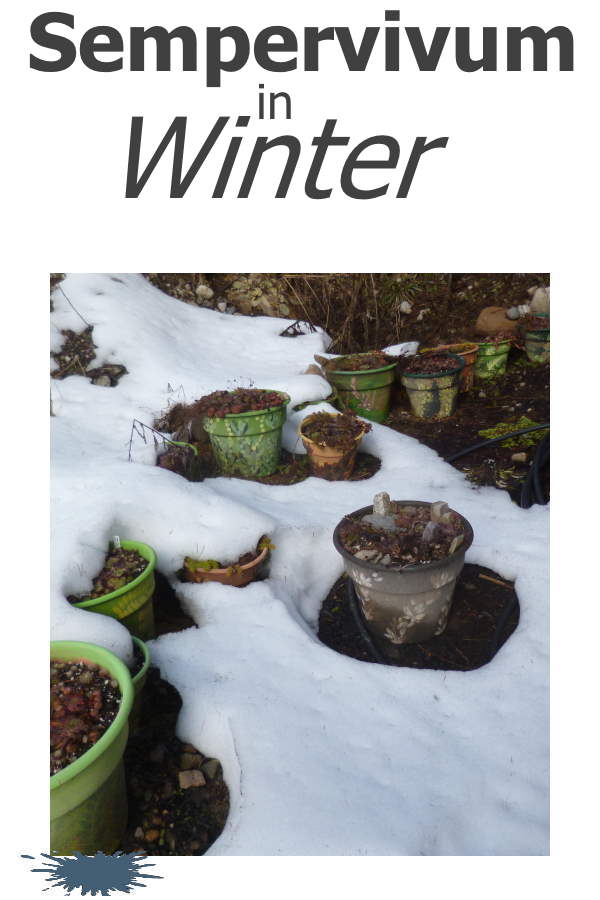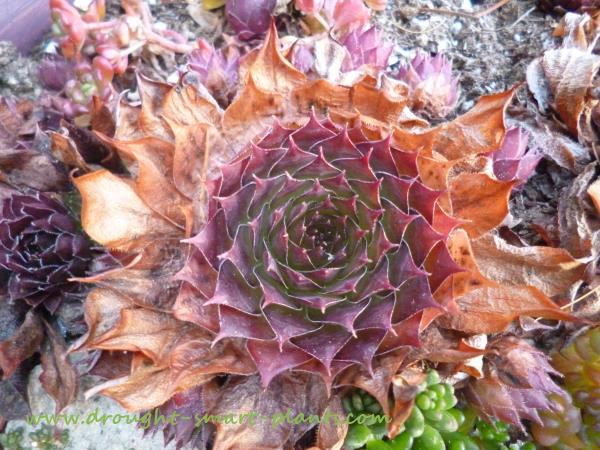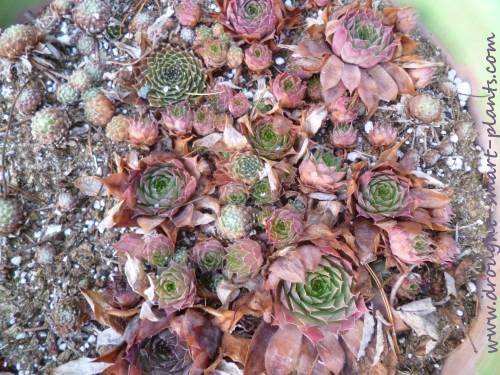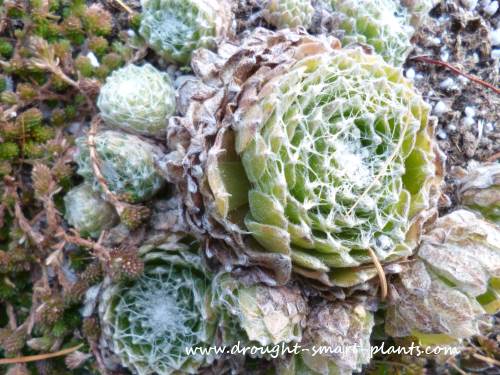Dormancy looks a lot like death for Hens and Chicks…
But they’re not dead, just resting. This phase of their growth cycle gives them a different look, not only in coloration, but with the cupping and drawing in of the foliage.

Hens and Chicks plants are tough; they actually require this time of resting, forced on them by the cooler temperatures.
Often, the outer leaves will dry out and start to cup the remaining live growth of the rosette, to protect it.
Leaving them in pots for the winter has given me a whole new appreciation for these incredibly hardy plants; they seem to be dying, but a few warmer days in the spring gives that the lie; even though they seem to be on their last legs, the cold winter weather is just what they need to rejuvenate themselves.

A grouping of mixed species and varieties draw into themselves – each rosette can be less than a half of it’s usual size.
The outer leaves dry out to protect the living part of the rosette.
It’s absolutely essential that they don’t get waterlogged at this time of year, they just have no defenses against it.
Keep them dry as possible – I’ve even seen people put plates of glass over them to prevent any moisture from puddling around the crown. As usual, perfect drainage of the soil.
See this page on preparing your succulent containers for winter for more tips.

Clustering cobwebs can sometimes become so tightly compressed that they appear white; the smaller chicks seem to do this more than the mature rosettes.
Sempervivum arachnoideum, the Cobweb Hens and Chicks is so expert at this – the smaller ones, like the one called ‘Encader’ look like snowballs.

If you’ve got some Sempervivum in your garden, check them out through the winter; the colors can change into plummy winter tones, even more beautiful in the lack of other plants growing.
Coloration of many types will change with temperature and day length. They’re all different, some of them look completely different with the changing seasons. Look at the Sempervivum Gallery for more.
Their survival skills are amazing; the changes they undergo only make them able to withstand cold, snowy winter weather.
When spring arrives and they look like they are recovering, you can pull the dead leaves off the bottom of the rosette, or completely remake them.

